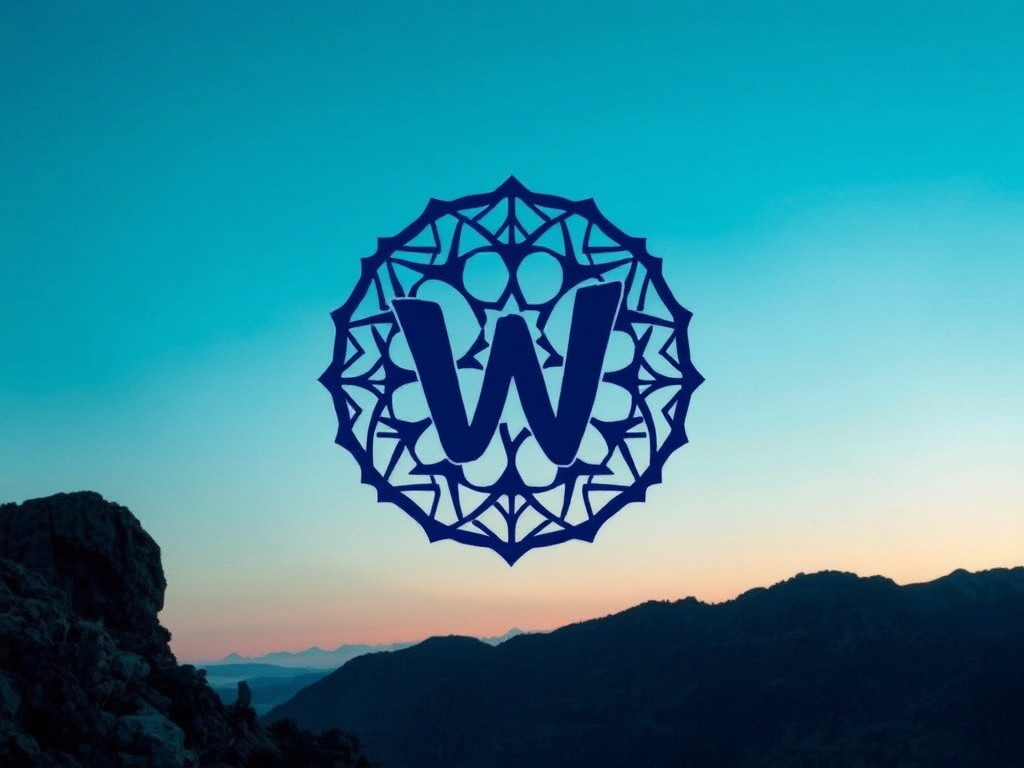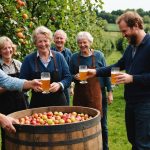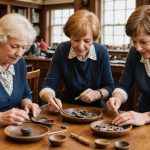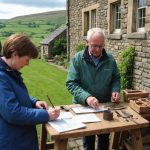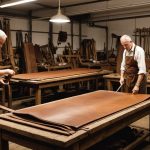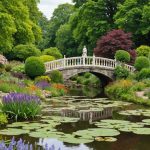Overview of Traditional British Leather Tanning
Traditional British leather tanning is deeply rooted in the nation’s history, showcasing the skill and artistry of British craftsmanship. This ancient craft has been integral to British society for centuries, providing materials for essential day-to-day items and luxurious goods alike.
The tanning process has always relied on natural materials, such as oak bark and other plant extracts, to transform raw hides into durable leather. These ingredients are not only sustainable but also give the leather a distinct character and long-lasting quality. The processes employed today are similar to those practiced hundreds of years ago, underscoring the cultural reverence for this craft. Techniques like vegetable tanning have been passed down through generations, ensuring their continuity and adherence to tradition.
Also to discover : Discovering Britain”s Industrial Heritage: A Guide to Touring Historical Landscapes for Travelers
Historically, leather held immense cultural importance in British society. It was used in a variety of applications—from clothing and footwear to bookbinding and furniture. The evolution of leather tanning is vividly illustrated by its enduring presence in British life, reflecting changes in both technology and fashion. Understanding this rich heritage allows us to appreciate the significance of traditional leather tanning and the unique touch it brings to modern craftsmanship.
Interactive Workshops: What to Expect
Embarking on leather tanning workshops offers an interactive learning journey that blends traditional craftsmanship with modern techniques. These workshops cater to both novices and seasoned artisans, taking participants through a structured itinerary that balances theory with hands-on experience.
In the same genre : Experience Authentic British Fish and Chips: A Guide for Tourists to Join Immersive Cooking Classes
Typically, the courses span over a few days. They commence with an introduction to the history and significance of leather tanning. Participants then delve into the selection of raw materials, where the emphasis is laid on quality and sustainability.
As you progress, the sessions become increasingly comprehensive. Beginners usually start by mastering fundamental skills such as cutting and stitching, while the more advanced techniques include intricate embellishments and finishing touches. Experienced instructors guide you meticulously, ensuring every participant gets personalized attention.
The core of these workshops lies in the tangible experience they provide. By engaging directly with materials and tools, learners gain a profound appreciation for the art of leather tanning. This approach not only enhances their skill acquisition but also immerses individuals in a rewarding and fulfilling craft endeavor. The result is a deeper understanding and respect for the intricate processes involved in creating high-quality leather goods.
Leather Tanning Process
The leather tanning process involves several meticulous steps, ensuring durability and quality of leather. Initially, the skin is treated to remove hair and other impurities, preparing it for tanning. Soaking and liming are crucial for cleaning and softening the hide. Following this, the dehairing step ensures the removal of unwanted follicles. Then, the pelt undergoes deliming and bating, crucial in adjusting the pH levels, which prepares it for proper tanning.
The core of the process is the actual tanning, which can be performed using various tanning techniques. In traditional British tanning, vegetable tanning and chrome tanning are most prevalent. Vegetable tanning uses natural tannins extracted from plant sources, giving the leather a unique character and environmentally friendly edge. Chrome tanning, on the other hand, employs chromium compounds, resulting in softer and more pliable leather.
Each step of tanning is overseen by skilled artisans, who play a pivotal role in maintaining quality control. Their expertise ensures that every piece of leather meets the standards expected in premium goods. Attention to detail at every stage is critical, as it directly influences the final product’s quality and appearance.
Participant Experiences and Testimonials
Engaging in workshop experiences can be transformative, as echoed by numerous participants. Testimonials highlight the personal growth and diverse skills gained, underscoring the value of such immersive learning opportunities. One participant expressed, “The experience reshaped my understanding and approach to craftsmanship, offering hands-on skills I never knew I needed.”
Through these workshops, individuals often emphasise the development of critical skills that extend beyond traditional learning environments. Participants have noted improvements in practical abilities as well as a boost in self-confidence. A past attendee remarked, “I acquired practical skills that directly applied to my projects, while also gaining confidence in my abilities.”
In addition to personal growth, workshops offer unparalleled networking opportunities. Participants frequently connect and share knowledge with a community of local artisans and peers. This interaction facilitates further learning and future collaborations, enriching both personal and professional life. One recent testimonial celebrated this, noting, “The opportunity to collaborate with local artisans significantly broadened my creative network.”
These firsthand testimonials not only highlight the variety of benefits but also reinforce the long-lasting impact of participating in workshop experiences.
Booking Information and Locations
When it comes to securing your spot in a workshop, knowing the registration details can make all the difference. Finding the right workshops available across the UK might seem daunting, but focusing on a few key elements can streamline the process.
First, check the various platforms advertising workshops and filter options based on your desired locations for workshops. Many websites allow you to sort by region, ensuring you find something suitable nearby.
Once you’ve pinpointed a workshop, the booking process typically involves a few straightforward steps. Most services will require you to fill out a registration form. This form will ask for personal details and sometimes skill levels or specific interests. Submit any required registration fees during this process. Some events accept online payments, while others might require bank transfers.
Keep an eye on availability, as popular workshops fill up quickly. Double-check dates and times to ensure they fit into your schedule. Understanding costs upfront is essential. Some workshops might be complimentary, while others include material fees or tuition costs. Being informed ensures that your workshop experience aligns perfectly with your expectations and budget.
Visuals and Multimedia Resources
Utilising visual resources is crucial in the leather tanning industry, providing insights that text can seldom offer alone. Video tutorials prove invaluable for both novices and experts by visually breaking down complex tanning processes into simple steps. These tutorials often cover everything from selecting raw hides to the intricate details of the tanning method, allowing for a comprehensive understanding.
Photography plays a significant role in showcasing the craftsmanship inherent in leather production. High-quality leather tanning imagery highlights the texture, colour variations, and finish that are trademarks of expertly tanned leather. These images serve not only as educational tools but also as a testament to the artistry involved in leather craftsmanship.
For those keen on delving deeper into the craft, numerous online platforms host a wealth of visual content. Websites and social media channels dedicated to leatherwork often feature curated galleries and instructional videos. These resources are instrumental in promoting skill enhancement and inspiring creativity among artisans and enthusiasts alike. Exploring such multimedia resources can dramatically improve one’s comprehension and appreciation of the leather tanning art, encouraging both learning and innovation in this traditional yet evolving field.
